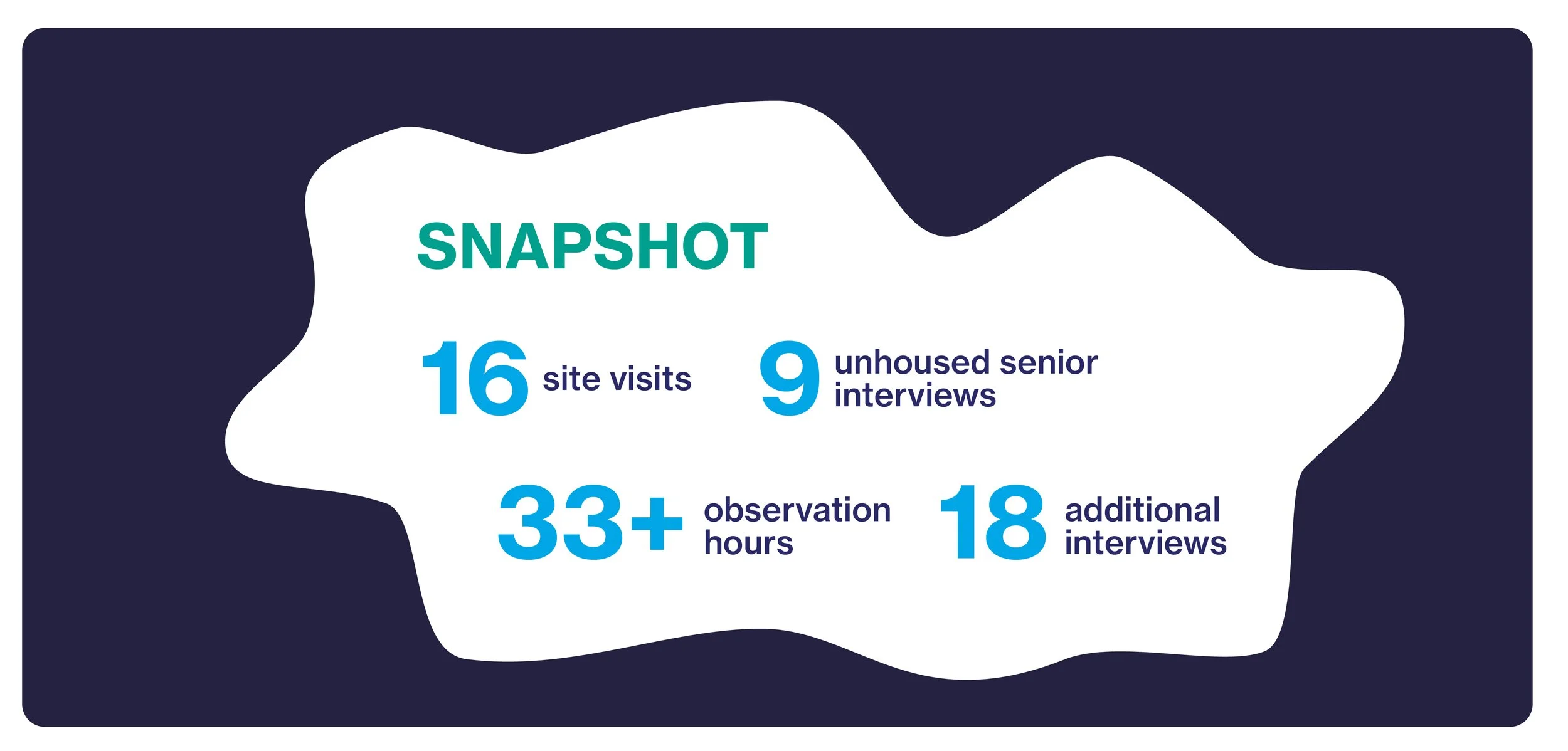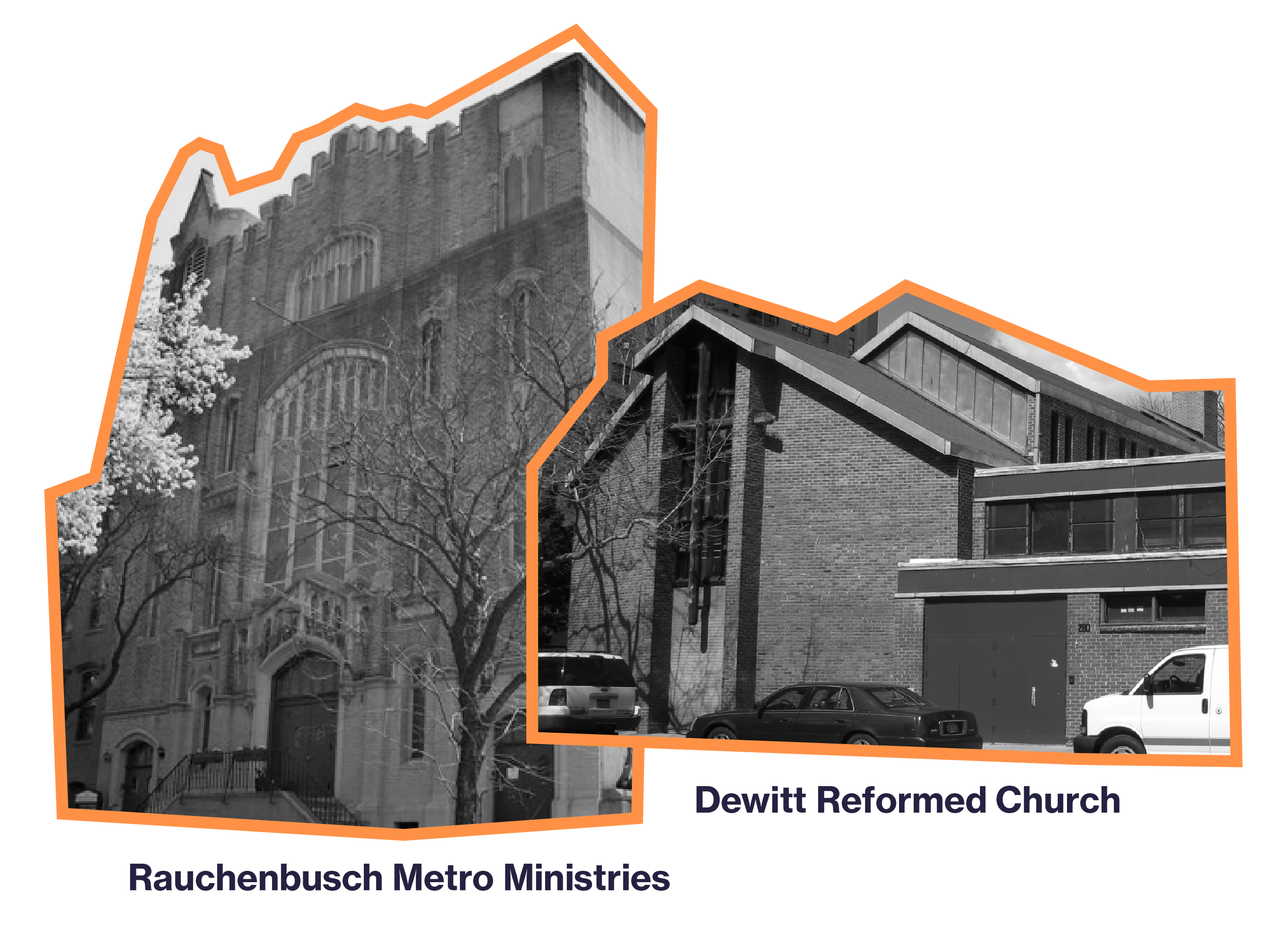

Role: Researcher + Visual Designer
Overview
In New York City, there are 1.55 million adults over the age of 60 and a little over 200,000 of them are living below the poverty level.
Poverty on top of a lack of affordable housing and rising living costs is causing many older adults to become unhoused - it is especially dangerous and harrowing for older adults as it hastens and causes an onset of degenerative diseases - osteoporosis, heart disorders, cancer, and diabetes.
Our goal is to understand and hopefully improve the food access experience of the unhoused senior population.
Process
We started with the question:
“How do unhoused seniors gain access to food?”
Discovery
We spent 10 weeks conducting field research and talking to 20+ stakeholders - unhoused seniors, food pantry workers, volunteers, temporary housing staff, and NYC council members - to get a well-rounded understanding of the food access experience of unhoused seniors.
Food Access Map
We mapped out their typical journeys to obtain food and discovered there were several. However, we learned that there are also many barriers and challenges existing in these avenues.
What We Learned
Learning 1
Declining physical and mental health limits the unhoused senior’s ability to access food. On top of that, their ailing health would require nutritious and specified dietary needs, further limiting their choices.
Learning 2
There are many restrictions and rules on providing food at soup kitchens, food pantries, and places of worship. Food pantries and soup kitchens have limited availability providing foods, and each patron is only allowed one visit per month at each food pantry.
Learning 3
Although there are federal aid programs such as SNAP, there are challenges for unhoused seniors applying for these benefits. Many lack ID or documents needed for application, and oftentimes, an interview is required.
Learning 4
Foods being given out at pantries and soup kitchens are limiting in choice and cannot cater to dietary needs. And canned foods and raw vegetables are mainly given out at pantries, which unhoused seniors don’t have the appliances to cook with.
Takeaways
Through our conversations with the various stakeholders (unhoused seniors, food pantries, and temporary housings), we discovered several converging points and this served as a starting point for us to design a quick-win solution whilst understanding a need for larger system change.
What We Did Next
Unhoused seniors often don’t know where and when places with food programs and events occur, and can only rely heavily on word-of-mouth relay of information.
“How might we increase the visibility of different food programs and their locations for the unhoused senior population, so they could have easier access to food?”
Quick-Win: Map Handout
The solution may not solve larger, systemic problems but can have an immediate benefit, and be delivered quickly.
The unhoused senior population doesn’t have access to the internet so the design outcome needs to be in a physical form. The legibility and readability of the information are vital, with visible and discernible subway train icons, provided with simple directions for people who do not have cell phones or access to GPS.
The outcome is a pocket-sized, weatherproof map that provides unhoused seniors with information on food pantries, soup kitchens, and shelters in New York City that does not require documents or ID, as well as their times and dates of availability.








